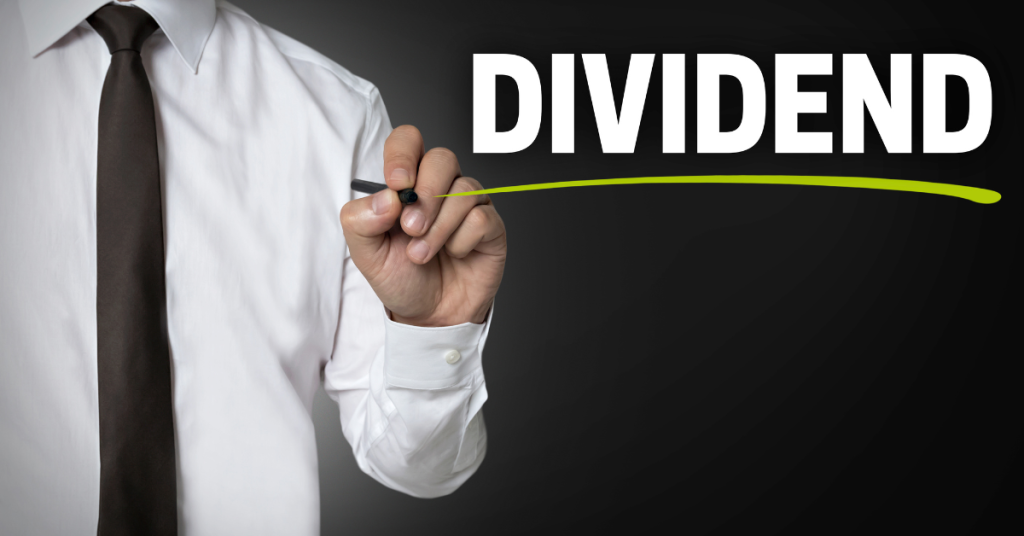Declaring Dividends on Different Classes of Shares: Is It Easy?
How do dividends work?
A dividend is a payment companies make to shareholders. Companies pay out cash to investors every quarter, half-year or full year. This money usually goes straight into the investor’s bank account. In exchange for receiving the payout, investors give up shares of ownership in the company.
Companies use dividends to help boost shareholder value. They can also provide stability for investors because it gives them a steady source of income. For example, many people choose to save their entire paycheck rather than put it towards a high interest savings account. Instead, they prefer to invest the money in something that pays out regularly.
If you’re looking to invest in dividend paying companies, there are several different types of funds to choose from. One option is to purchase individual stocks. Another choice is to invest in mutual funds. A third option is to invest directly in an ETF or an index fund. Each one offers benefits and drawbacks. Let’s take a look at each type of investment.

Can various dividends be paid to shareholders?
Limited companies can structure their capital into different classes of shares, known as ‘alphabet shares’, which have different dividend rates and voting rights attached to them. Alphabet shares can be used to give different investors different returns on investment.
For example, one investor might want to invest in a company where she gets 10% of the profits every year, while another investor wants 20%. If both investors put money into the company, the company could offer them both different types of shares – A shares, which gives 10%, and B shares, which gives 20%. This allows the company to distribute dividends based on what type of share it holds.
of issuing dividends?
Alphabet shares allow you to distribute profits proportionately or according to investment amounts, making it possible to give out dividends to investors. You decide how much to pay each shareholder, whether to make it a fixed amount or based on the number of shares owned, and if you want to issue dividends to all shareholders or just those who bought shares during a certain period.
You can also choose to make dividends payable either to the investor’s account or by way of check. If you’re giving out dividends, there’s no limit to the amount of money you can pay out. However, you must declare the payment in advance and include the total value of the dividends paid in your annual report.
The personal allowance is set to increase to £12,570 next year. This means shareholders don’t have to pay any taxes if they take home more than this amount. There’s also an additional dividend allowance of up to £2,000. This means shareholders can keep taking advantage of the dividend tax break even if they make more than £12,570.
How are dividends distributed to shareholders?
A dividend is one way a corporation distributes profits among its shareholders. A dividend is paid out of earnings and retained earnings. Earnings are money left over after paying off debts and expenses. Retained earnings are what’s left over after paying off debt and expenses. Companies declare dividends regularly. Some companies pay quarterly while others pay monthly.
Companies usually pay dividends once a quarter. This is called a “quarterly dividend.” However, some companies pay dividends every month. This is called a monthly dividend.
When a company declares a dividend, it sends out a notice about the amount of the dividend along with how often it will be paid. When a company pays a dividend, it issues a check or electronic transfer to each shareholder.
The board of directors decides whether to distribute dividends based on several factors including the company’s profit performance, cash flow needs and future plans. If there isn’t enough money to cover the costs of running the company, the board won’t declare a dividend.
Shareholders can choose to reinvest their dividends into additional shares of stock. Or, they can use the dividends to buy something else like bonds or mutual funds.
What if you wish to switch share classes?
Shareholder dividends are paid out based on the total amount of shares owned, regardless of how many shares each shareholder owns. In some cases, companies do offer a dividend payout based on the number of outstanding shares held. However, it is important to note that this is not always the case. Some companies choose to pay dividends based on the total value of the company, rather than the number of shares.
This makes sense because there could be different types of shareholders within one company.
Companies House will send out reminders every year to shareholders about their upcoming dividend payments. These letters will include information about the date of payment, the amount of the dividend, and the name of the person receiving the dividend. They will also provide information about whether the company offers a dividend payout based on shares or on the total value of a company.
If you decide to change your share type, you’ll need to notify Companies House. This process involves filing a notice with Companies House, along with proof that you’re no longer a member of the original class of shares. Once you file this notice, you’ll be able to trade the new shares without having to go through the same steps again.
3 customer service tips for small businesses
The best way to keep customers happy is to provide excellent customer service. But how do you go about it? Here are five tips to help you improve your customer service skills.
1. Be friendly
Customers want to feel like they’re dealing with people, not robots. So make sure you greet each one personally. Smile, say hello, and ask how they’re doing. When someone says “thank you,” respond with a genuine smile and thank them again.
2. Listen
You don’t have to agree with everything your customers say, but you do need to listen to what they’re saying. If they complain about something, try to find out why. Is it because they had a problem with your product or service? Did they receive poor quality goods or services? Do they think you could have handled things better? Once you’ve found out what went wrong, work hard to fix it.
3. Respond quickly
If a customer calls you with a complaint, take action immediately. Don’t let the issue linger for days or weeks. You’ll lose their trust and goodwill. And if you’re busy, tell them so. Customers appreciate honesty and transparency.
How to create a profile for a new firm
A company profile should include information on what you offer, where it is located, how long you’ve been around, and why people should care. You’ll want to make sure that your company profile includes:
• Your name, address, phone number, and email address
• An image of your logo
• Links to your social media accounts
• Contact information for your sales team
• Details on your product or service offerings
• Information on your industry
Frequently Asked Questions
Do dividend distributions need to be uniform in amount?
Shareholders usually receive dividend payments based on how many shares they own. However, there are several ways you could receive dividends. They include:
• Dividends paid out per share – This is the most common way to pay out dividends. If you hold one share, you’ll receive one dividend payment.
• Alphabet shares – These are often used by large corporations because they give shareholders special benefits such as extra votes or increased dividends.
• Special dividends – Companies sometimes use special dividends to reward shareholders for outstanding performance.
The type of shares you own determines whether you get a bigger or smaller payout. For example, if you buy A shares, you’ll get a larger dividend than someone holding B shares. You still get the same number of shares though.
How to declare dividends on various share classes
The most common form of corporate governance involves having multiple directors, each of whom holds one type of share. This structure ensures that shareholders do not have too much power over the board of directors. However, it does mean that there needs to be a formal process in place for declaring dividends.
If you are the sole director of the corporation, you will need to prepare a dividend declaration document. This document will detail how much money you received in dividends, and where the funds came from. You’ll also need to record the information about yourself and the company.





